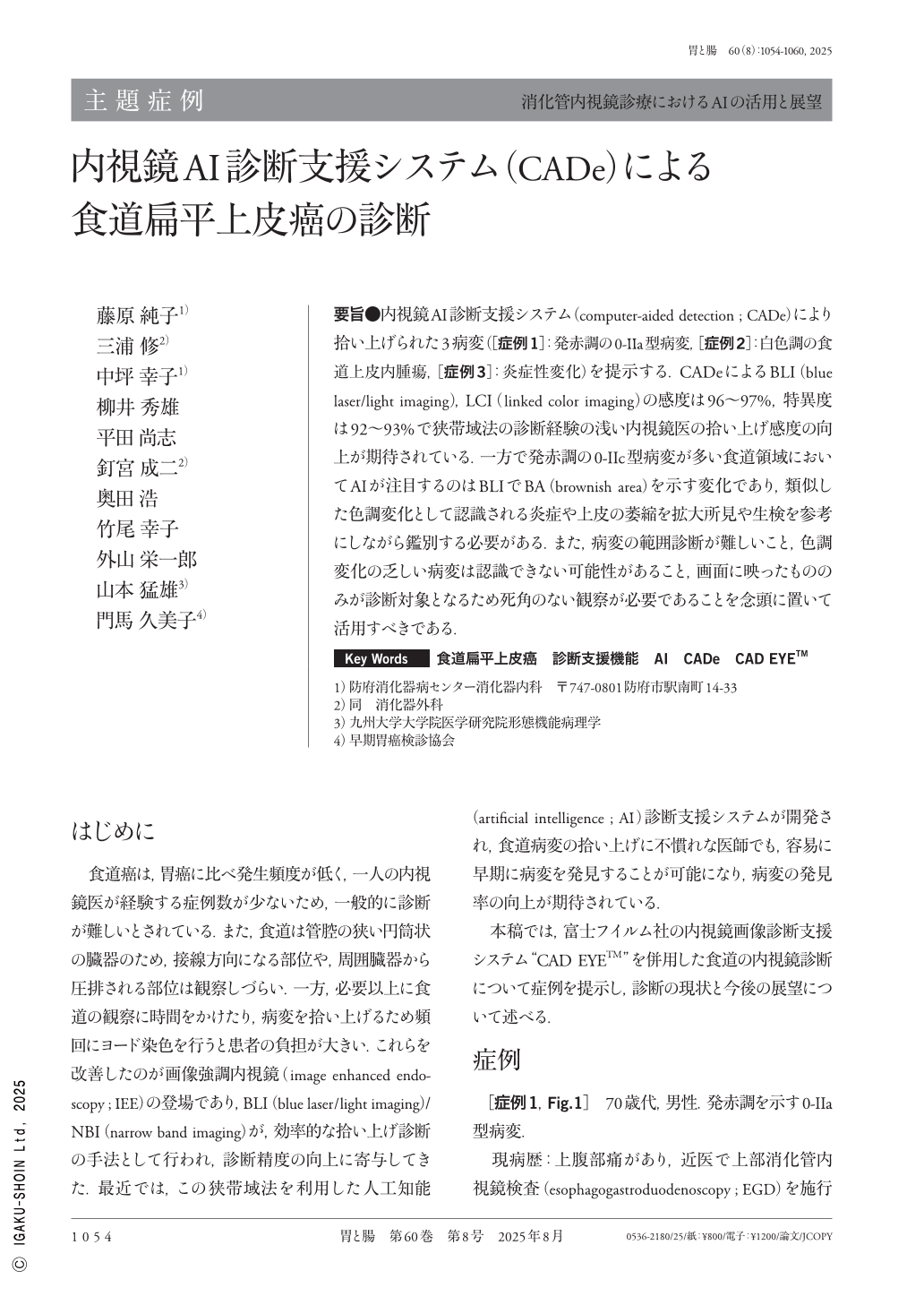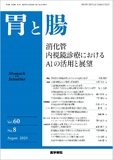Japanese
English
- 有料閲覧
- Abstract 文献概要
- 1ページ目 Look Inside
- 参考文献 Reference
要旨●内視鏡AI診断支援システム(computer-aided detection ; CADe)により拾い上げられた3病変([症例1]:発赤調の0-IIa型病変,[症例2]:白色調の食道上皮内腫瘍,[症例3]:炎症性変化)を提示する.CADeによるBLI(blue laser/light imaging),LCI(linked color imaging)の感度は96〜97%,特異度は92〜93%で狭帯域法の診断経験の浅い内視鏡医の拾い上げ感度の向上が期待されている.一方で発赤調の0-IIc型病変が多い食道領域においてAIが注目するのはBLIでBA(brownish area)を示す変化であり,類似した色調変化として認識される炎症や上皮の萎縮を拡大所見や生検を参考にしながら鑑別する必要がある.また,病変の範囲診断が難しいこと,色調変化の乏しい病変は認識できない可能性があること,画面に映ったもののみが診断対象となるため死角のない観察が必要であることを念頭に置いて活用すべきである.
Three lesions(case 1, reddish 0−IIa lesion ; case 2, whitish esophageal intraepithelial neoplasia ; and case 3, inflammatory changes)detected using an endoscopic AI diagnostic support system(computer-aided detection[CADe])are presented. The sensitivity and specificity of CADe's blue laser imaging(BLI)and linked color imaging are 96−97% and 92−93%, respectively ; CADe is anticipated to improve the detection sensitivity of endoscopists who have little experience in narrow-band diagnosis. Conversely, in the esophageal region, where reddish 0−IIc lesions frequently occur, AI focuses on detecting changes that appear as brownish areas on BLI, and inflammation and epithelial atrophy, which are recognized as similar color changes, should be differentiated on the basis of magnification findings and biopsy results. Furthermore, of note, diagnosing the extent of the lesions is challenging, lesions with little color changes may be unrecognizable, and observation without blind spots is crucial because diagnosis solely relies on the displayed images.

Copyright © 2025, Igaku-Shoin Ltd. All rights reserved.


